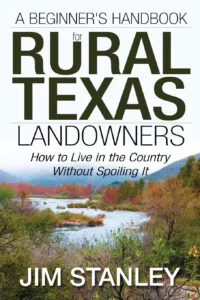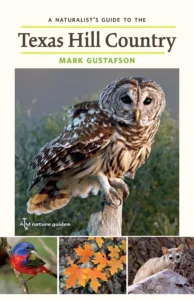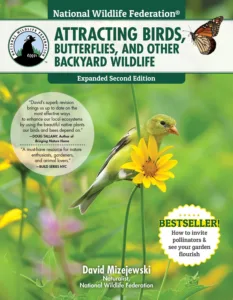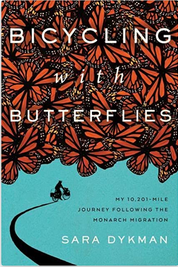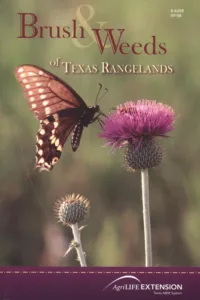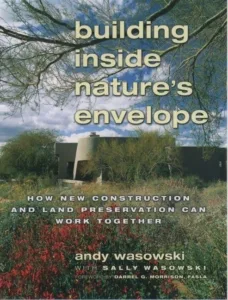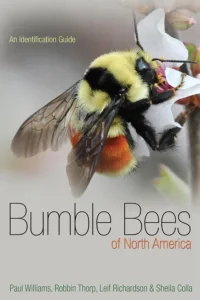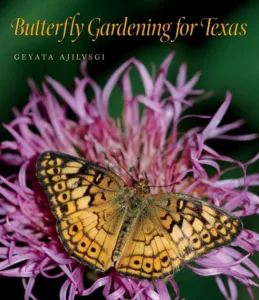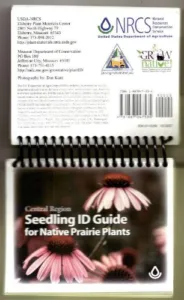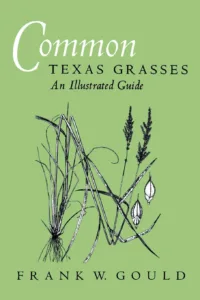
Over the decades, members have suggested books to one another. The list below includes publications that cover a variety of topics that our members find interesting and useful. However, the books below have not been reviewed and may include some non-native plant resources.
You can support the Native Plant Society by purchasing on our Bookstore.
To recommend a book for this list, contact your chapter webmaster.
Dorothy Barid Mattiza
Identifies 100 of the most conspicuous wildflower species native to Texas keyed to the regions where each may be found Photos by members of the Native Plant Society of Texas
Read Review...
Jim Stanley
Living in the country in Texas can be the most enjoyable experience of your life but managing rural property is not the same as taking care of a half acre suburban hellip
Read Review...
Richard B. Taylor, Jimmy Rutledge, and Joe G. Herrera
A Field Guide to Common South Texas Shrubs is a plant identification field guide designed to assist landowners managers and hunters identify selected woody plants and cacti that are important hellip
Read Review...
Theodore F. Niehaus, Charles L. Ripper
This guide covering 1 505 species of wildflowers groups flowers by color and plant characteristics for easy matching of pictures with specimens With descriptions facing the more than 1 500 illustrations all hellip
Read Review...
Benny Simpson
This book provides a comprehensive guide to identifying trees in Texas It includes detailed descriptions of over 200 species of trees as well as illustrations and photographs to aid in hellip
Read Review...
Steven T. Manning
This book provides the latest information on how to organize and enact prevention programs build strategies implement integrated procedures for management and proceed towards site rehabilitation and restoration The book hellip
Read Review...
Mark Gustafson
In this guide biologist Mark Gustafson introduces residents and visitors to the history geology water resources plants and animals found in the nineteen counties occupying the eastern part of the hellip
Read Review...
Dexter Peacock and Forrest Smith
Includes 200 of the most common grasses flowering plants vines cacti and woody plants of the South Texas Sand sheet Part of Perspectives on South Texas a 12 book series sponsored hellip
Read Review...
Aldo Leopold
A Sand County Almanac with Other Essays on Conservation from Round River is a book written by Aldo Leopold first published in 1949 The book is a collection of essays hellip
Read Review...
Mary F. Irish and Gary Irish
This book provides information on the cultivation and gardening uses of agave and yucca as well as several other American genera in the family Agavaceae with discussion of their cultivation hellip
Read Review...
Charles D. Stutzenbaker
This is a comprehensive guide to the aquatic and wetland plants of the Gulf Coast from New Orleans to Brownsville including all of the Texas coast The book is authored hellip
Read Review...
Wayne H. McAlister and Martha K. McAlister
This book is a comprehensive guide to the natural and cultural history of Aransas National Wildlife Refuge located on the Texas Gulf Coast The book offers a detailed overview of hellip
Read Review...
B.L. Turner, Holly Nichols, Geoffrey Den, Barney Lipscomb
This is the first atlas of the Texas flora ever and provides distributional information for about 6000 taxa of vascular plants native and naturalized in the state of Texas The hellip
Read Review...
B.L. Turner, Barney Lipscomb
This is the first atlas of the Texas flora ever and provides distributional information for about 6000 taxa of vascular plants native and naturalized in the state of Texas The hellip
Read Review...
Stan Tekiela
The handy book is divided into three main sections First you ll learn all about hummingbirds facts range habitat songs nests and more Up next you ll be introduced to the feeding hellip
Read Review...
Thomas E. Pope, Charles F. Fryling Jr., Neil G. Odenwald
With its unique climate soil and a longer growing season the South gives its gardeners singular opportunity to combine the two most popular outdoor activities in the US gardening and hellip
Read Review...
David Mizejewski
This book shows homeowners how to fill their yards and gardens with the sights and sounds of nature Author David Mizejewski presents simple plans for reintroducing native plants that birds hellip
Read Review...
The Xerces Society
This book is by The Xerces Society an international nonprofit organization that is leading the way in pollinator conservation The book provides a thorough overview of the problem along with hellip
Read Review...
Sara Dykman
The author s compelling personal journey confirming the urgency of supporting the 2 way migration of monarch butterflies View an interview with the author on Central Texas Gardener here
Read Review...
Douglas W. Tallamy
This book is a call to arms for gardeners who are searching for a better way to plant maintain and enjoy their gardens The author argues that traditional landscaping practices hellip
Read Review...
Charles R. Hart, James H. Everitt, D. Lynn Drawe
This book is a field guide published by Texas A amp M Agrilife Extension Service that helps landowners and rangeland managers identify the brush and weed species of greatest concern in their hellip
Read Review...
Andy Wasowski, Sally Wasowski, Darrel G. Morrison
This book presents the concept of nature 8217 s envelope showing not only how construction can be managed in harmony with it but also how homeowners and builders can save money while hellip
Read Review...
Paul H. Williams, Robbin W. Thorp, Leif L. Richardson, Sheila R. Colla
This book is a comprehensive guide to the bumble bees of North America The book provides detailed information on the identification distribution ecology and conservation of all 46 bumble bee hellip
Read Review...
John Tveten, Gloria Tveten
This book is a comprehensive guide to the butterflies of Houston and Southeast Texas It covers more than 200 species of butterflies including their life stages habitat and adult nectar hellip
Read Review...
Jeffrey Glassberg
This book is a field guide to the butterflies of Western North America The book offers a comprehensive display of all the magnificent butterflies of the western region stretching from hellip
Read Review...
Geyata Ajilvsgi
8220 Butterfly Gardening for Texas 8221 is a book written by Geyata Ajilvsgi an expert on plant and butterfly species in Texas The book provides practical information about all kinds of butterflies hellip
Read Review...
Geyata Ajilvsgi
Information on creating an instant butterfly garden growing pollinator friendly native plants how to photograph butterflies and more
Read Review...
Del Weniger
This is a field guide that provides an illustrated overview of the cacti found in Texas and surrounding states The guide covers over 100 species of cacti including the ten hellip
Read Review...
USDA Natural Resources Conservation Service
This book is a field guide that provides a comprehensive overview of native prairie plants at various stages of growth The guide is authored by the USDA NRCS Elsberry Plant Materials hellip
Read Review...
George Clendenin
Detailed descriptions and line drawings help identify 140 economically important grasses wildflowers shrubs and trees on Texas rangelands as well as the benefit of each to wildlife
Read Review...
Frank W. Gould, Brushy Creek Chapter of the Native Plant Society of Texas
This book is a field guide that provides an illustrated overview of the most significant common grasses growing in Texas The guide contains a key to updated names of grasses hellip
Read Review...
Douglas F. Welsh
This book is a comprehensive guide for gardeners and 8220 yardeners 8221 in Texas The book provides detailed information on flowers garden design trees shrubs and vines as well as vegetable herb hellip
Read Review...
Bonnie B. Amos, Frederick R. Gehlbach
This book is a collection of eight studies of the Edwards Plateau originally presented at a symposium sponsored by the Southwestern Association of Naturalists The aim of the book is hellip
Read Review...
Del Weniger
This book describes Texas as it was when European explorers arrived shares the impressions of early travelers and explains how the prairies have changed
Read Review...
Stephan L. Hatch , Kelly C. Umphres, A. Jenét Ardoin
The book covers 172 species of grasses and contains range maps and color images of the inflorescences and spikelets of each species along with detailed black and white illustrations found in the hellip
Read Review...
James H. Everitt, D. Lynn Drawe, Robert Lonard
8220 Field Guide to the Broad Leaved Herbaceous Plants of South Texas Used by Livestock and Wildlife 8221 is a comprehensive guide to the most significant common grasses growing in Texas The book hellip
Read Review...
A. Michael Powell and Richard D. Worthington
Taxonomic treatments of 2343 flowering plant species 120 sub specific taxa with botanical information
Read Review...
Rowan Jacobsen
This is a book authored by Rowan Jacobsen that discusses the disappearance of the world 8217 s honeybee population and how it puts the food we eat at risk
Read Review...
Sally Wasowski and Andy Wasowski
Filled with practical advice and detailed information this indispensable guide to prairie gardening shows readers how to choose space plan a garden select plants and flowers and much more
Read Review...
James H. Everitt, D. Lynn Drawe, Robert I. Lonard
This book is a field guide that provides an illustrated overview of the most significant common grasses growing in South Texas The guide catalogs 250 taxa representing 9 subfamilies 15 hellip
Read Review...
| Title | Author | Summary |
|---|---|---|
| The Nature of Oaks: The Rich Ecology of Our Most Essential Native Trees | Douglas W. Tallamy | The Nature of Oaks reveals what is going on in oak trees month by month, highlighting the seasonal cycles of life, death, and renewal. |
| Nature's Best Hope | Douglas W. Tallamy | Nature's Best Hope shows how homeowners everywhere can turn their yards into conservation corridors that provide wildlife habitats. |
| Gardening With Prairie Plants: How To Create Beautiful Native Landscapes | Sally Wasowski and Andy Wasowski | Filled with practical advice and detailed information, this indispensable guide to prairie gardening shows readers how to choose space, plan a garden, select plants and flowers, and much more. |
| 100 Texas Wildflowers | Dorothy Barid Mattiza | Identifies 100 of the most conspicuous wildflower species native to Texas, keyed to the regions where each may be found. Photos by members of the Native Plant Society of Texas. |
| A Beginner’s Handbook for Rural Texas Landowners | Jim Stanley | The subtitle spells it out: ” How to Live in the Country Without Spoiling It.” This new book is the perfect introduction for small landowners wanting to be good stewards of their piece of the Hill Country. As the title says, it’s a place to begin and a perfect lead-in to Stanley’s earlier book (above) which contains more specifics. |
| A Field Guide to Common South Texas Shrubs | Taylor, Richard B., Jimmy Rutledge, and Joe G. Herrera | |
| A Field Guide to Texas Trees | Benny Simpson | |
| A Management Guide for Invasive Plants in Southern Forests | Manning, Steven T. | |
| A Sand County Almanac with Other Essays on Conservation from Round River | Aldo Leopold | |
| Agaves, Yuccas, and Related Plants: A Gardener’s Guide | Irish, Mary and Gary | |
| Aquatic & Wetland Plants of the Western Gulf Coast | Stutzenbaker, Charles D. | |
| Aransas, A Naturalist’s Guide | McAlister & McAlister | |
| Atlas of the Vascular Plants of Texas | Billie Lee Turner, Holly Nichols, Geoffrey C. Denny, and Oded Doron | |
| Attracting and Feeding Hummingbirds | Williamson, Sheri | |
| Attracting Birds to Southern Gardens | Pope, Odenwald, Fryling | |
| Attracting Birds, Butterflies & other Backyard Wildlife | Mizejewski, David | |
| Attracting Native Pollinators: Protecting North America’s Bees and Butterflies: the Xerces Society Guide | Eric Lee-Mäder | |
| Bringing Nature Home | Douglas W. Tallamy | |
| Bringing Nature Home: How Native Plants Sustain Wildlife in Our Gardens | Douglas W. Tallamy | Everyone with access to a patch of earth can make a significant contribution toward sustaining biodiversity by simply choosing native plants. |
| Brush and Weeds of Texas Rangelands | Hart, Charles R., Barron S. Rector, et al | |
| Building Inside Nature’s Envelope | Sally Wasowski and Andy Wasowski | |
| Bumble Bees of North America: An Identification Guide | Paul Williams, Robbin Thorp, Leif Richardson and Sheila Colla | |
| Butterfly Gardening for Texas | Geyata Ajilvsgi | |
| Butterfly Gardening for the South | Geyata Ajilvsgi | |
| Butterflies of Houston and Southeast Texas | John and Gloria Tveten | |
| Cacti of Texas and Neighboring States | Del Weniger | Field Guide |
| Central Region Seedling ID Guide for Native Prairie Plants | NRCS, US Department of Agriculture | Small spiral bound laminated field guide for identifying Native Prairie Plants of the Central Region of the US. |
| Butterflies through Binoculars: The West | Jeffrey Glassberg | |
| Common Texas Grasses: An Illustrated Guide (Volume 3) | Frank W. Gould and Stephan L. Hatch | Field Guide |
| Doug Welsh’s Texas Garden Almanac | Doug Welsh | |
| Edwards Plateau Vegetation | Bonnie B. Amos and Frederick R. Gehlbach | |
| Explorers’ Texas: The Lands and Waters | Del Weniger | |
| A Field Guide for the Identification of Invasive Plants in Southern Forests | James H. Miller, Erwin B. Chambliss, and Nancy J. Loewenstein | This book provides information on accurate identification of the 56 nonnative plants and groups that are currently invading the forests of the 13 Southern States, including Texas. It lists other nonnative plants of growing concern, covering trees, shrubs, vines, grasses, ferns, and forbs. |
| Field Guide to Common Texas Grasses | Stephen L. Hatch, Kelly C. Umphres & A. Jenet Ardoin | |
| Field Guide to Broad-leaved Herbaceous Plants of South Texas | Everitt, James H., D. Lynn Drawe, Robert I. Lonard | |
| Field Guide to Common South Texas Shrubs | Taylor, Rutledge, Herrera | |
| Fruitless Fall: The Collapse of the Honey Bee and the Coming Agricultural Crisis | Rowan Jacobsen | Rowan Jacobsen uses the mystery of Colony Collapse Disorder to tell the bigger story of bees and their' essential connection to our daily lives. |
| Grasses of Southern Oklahoma and North Texas: a Pictorial Guide | Russell Stevens & Chuck Coffey with the Samuel Roberts Noble Foundation | |
| Fruitless Fall: the Collapse of the Honey Bee and the Coming Agricultural Crisis | Rowan Jacobsen | |
| Grasses of South Texas: A Guide to Identification and Value | Everitt, James H., D. Lynn Drawe, Christopher, R. Little, Robert I. Lonard | |
| Grasses of the Texas Hill Country | Brian Loflin and Shirley Loflin | This photographic guide to grasses gives all who have been frustrated trying to identify these difficult plants an easy-to-use, visually precise, and information-packed field guide to seventy-seven native and introduced species that grow in the Texas Hill Country and beyond. With a blade of grass in hand, open this book and find: Handy thumb guides to seedhead type, the most visible distinguishing characteristic to begin identification. Color photographs of stands of grasses and detailed close-ups. Concise information about economic uses, habitat, range, and flowering season. Quick-reference icons. |
| Guide to Texas Grasses | Shaw, Robert B | |
| Half Earth: Our Planets Fight for Life | E.O. Wilson, Liveright | |
| Hill Country Ecology; Essays on Plants, Animals, Water, and Land Management | Jim Stanley | In this book, Dr. Stanley, a knowledgeable naturalist of Hill Country issues, addresses a wide range of topics of interest and concern to residents of the Texas Hill Country. |
| Hill Country Landowner’s Guide | Jim Stanley | In this invaluable book, Jim Stanley charts a practical course for understanding and handling a variety of problems that both new and established landowners in the Texas Hill Country will confront—from brush control, grazing, and overpopulation of deer to erosion, fire, and management of exotic animals and plants. |
| How to Grow Native Plants of Texas & the Southwest | Nokes, Jill, Kathryn Miller Brown | |
| How to Grow Native Plants of Texas and the Southwest, Revised & Updated | Jill Nokes | How to Grow Native Plants of Texas and the Southwest has set the standard for both home and professional gardeners. In addition to the individual plant descriptions, Jill Nokes also devotes whole chapters to gathering and storing seeds, seed germination, planting, vegetative propagation, and transplanting. |
| Hummingbirds of Texas | Klym, Mark; Shackelford, Clifford E.; Lindsay, Madge M | |
| Identification of Milkweeds in Texas | Singhurst, Jason, Ben Hutchins, and Walter C. Holmes | |
| In a Desert Garden: Love and DFeath Among the Insects | John Alcock | |
| Insects and Gardens: In Pursuit of a Garden Ecology | Eric Grissell | With a sound basis in science and a practical grounding in gardening experience, Grissell introduces the reader to the role of insects in garden ecology. |
| Invasive Plants: Guide to Identification and the Impacts and Control of Common North American Species | Kaufman and Kaufman | |
| Landscape Plants for Dry Regions | Warren Jones and Charles Sacamano | |
| Landscaping Revolution: Garden with Mother Nature, Not Against Her | Sally Wasowski and Andy Wasowski | |
| Landscaping with Native Texas Plants | Sally Wasowski and Julie Ryan | |
| Landscaping with Native Plants of Texas | George Oxford Miller | In this comprehensive, richly illustrated guide, author George Oxford Miller provides the "how-to," "when-to," and "what-to" for gardeners, landscapers, and homeowners throughout Texas. |
| Landscaping with Native Plants of Texas & the Southwest | Miller, George O | |
| Last Child in the Woods:Saving our Children from Nature-Deficit Disorder | Ruchard Louv | |
| Lawn Gone! Low-Maintenance, Sustainable, Attractive Alternatives for Your Yard | Penick, Pam | |
| Life on a Little Known Plant: A Biologist’s View of Insects and Their World | Howard Ensign Evans | |
| Manual of the Vascular Plants of Texas | Correll and Johnston | |
| Matagorda Island, A Naturalist’s Guide | McAlister & McAlister | |
| Native and Adapted Landscape Plants: an Earthwise Guide for Central Texas | Texas AgriLife Extension, City of Austin | |
| Native & Naturalized Woody Plants of Austin and the Hill Country | Brother Daniel Lynch | Field Guide |
| Native Host Plants for Texas Butterflies: A Field Guide | Jim Weber, Lynne M. Weber, Roland H. Wauer | |
| Native Host Plants for Texas Moths: A Field Guide | Jim Weber, Lynne M. Weber, Roland H. Wauer | |
| Native Perennials for the Southeast | H. Peter Loewer | |
| Native Plant Gardening for Beginners | Haeley Giambalvo | It is easy to do with native plants! Native Plant Gardening for Beginners is your QUICK START GUIDE to making your native plant garden a REALITY! |
| Native Plants in Landscaping: Trees, Shrubs, Cacti and Grasses of the Texas Desert and Mountains | Michael and Shirley A. Powell | The only book on ornamental plants dedicated to the remarkably cold-hardy and arid-adapted native species of Trans-Pecos Texas. The potential of these trees, shrubs, succulents, cacti, and grasses for use in the landscape, both within and beyond the borders of their native habitats, has been only superficially tapped. |
| Native Texas Gardens: Maximum Beauty, Minimum Upkeep | Sally Wasowski and Andy Wasowski | |
| Native Texas Plants: Landscaping Region by Region, 2nd Edition | Sally Wasowski and Andy Wasowski | This is one of the first gardening and landscaping guides to feature native plants. One of the first books to get after moving to Texas, for those of us who were part of the problem on arrival, and seek instead to be part of the solution. |
| Nature’s Best Hope: A New Approach to Conservation that Starts in Your Yard | Doug Tallamy | |
| Nature’s Best Hope (Young Readers’ Edition): A New Approach to Conservation that Starts in Your Yard | Doug Tallamy | |
| A Naturalist’s Guide to theTexas Hill Country | Mark Gustafson | an overview of the plants, animals, geography, geology and history of the Hill Country. Especially good for newcomers to the world of nature in the Hill Country. |
| Noah’s Garden: Restoring the Ecology of Our Own Back Yards | Sara Stein | When Stein realized what her intensive efforts at making a traditional garden had done, she set out to "ungarden." Her book interweaves an account of her efforts with an explanation of the ecology of gardens. |
| Nonnative Invasive Plants of Southern Forests: A Field Guide for Identification and Control | Miller, James H. | |
| North Central Texas Wildflowers: Field Guide | Mary Curry | |
| Our Native Bees: North America’s Endangered Pollinators and the Fight to Save Them | Paige Embry | |
| Plants of the Rio Grande Delta | Richardson | |
| Plants of the Texas Coastal Bend | Lehman, Roy L., Ruth O’Brien and Tammy White | |
| Pollinators of Native Plants: Attract, Observe and Identify Pollinators and Beneficial Insects with Native Plants | Heather N Holm | |
| Prairie Time, a Blackland Portrait | Matt White | |
| Range Plants of North Central Texas: a Land User’s Guide to Their Identification, Value and Management | Linex, Ricky J. | The plants covered in this very useful new book overlap considerably with our part of the Hill Country, making this a great addition to everyone’s plant identification library. Forbs, woody plants and grasses are covered with excellent pictures of the plants and seeds. Content includes description of the plants as well as their use, value and management in the native habitat. This book is published by the Natural Resources Conservation Service (NRCS) in Weatherford and may be purchased at many of their offices, including the one in Kerrville at 2104 Memorial Blvd. (830) 896-4911. |
| Rare Plants of Texas | Poole, Jackie; Carr, William; Price, Dana; Singhurst, Jason | |
| Roadside Flowers of Texas | Howard S. Irwin (Author), Mary Motz Wills (Painter | 295 pp., 64 pages of color illustrations. Paintings by Mary Motz Wills. Includes black and white illustrations of diagrams of the parts of a plant. Includes definition of botanical terms and index. |
| Native Plants for Southwestern Landscapes | Judy Mielke | |
| Remarkable Plants of Texas: Uncommon Accounts of Our Common Natives | Matt Warnock Turner | Matt Warnock Turner explores the little-known facts—be they archaeological, historical, material, medicinal, culinary, or cultural—behind our familiar botanical landscape. |
| Requiem for a Lawnmower | Sally Wasowski and Andy Wasowski | |
| Shinner's and Mahler’s Illustrated Flora of North Central Texas | Diggs, George M., Barney L. Lipscomb, and Robert J. O’Kennon | |
| Southwestern and Texas Wildflowers | Niehaul, Ripper and Savage | |
| Stokes Butterfly Book: The Complete Guide to Butterfly Gardening | Stokes, Donald & Lillian | |
| Stokes Hummingbird Book: The Complete Guide to Hummingbird Gardening | Stokes, Donald & Lillian | |
| The Weather-resilient Garden: A Defensive Approach to Planning and Landscaping | Charles W. G. Smith | |
| Texas Bug Book: The Good, the Bad, and the Ugly | Beck, Malcolm and Garrett, John Howard | |
| Texas Cacti | Texas A&M University Press | |
| Texas Gardening for the 21st Century: Planning, Constructing, Planting, Embellishing, and Maintaining Your Landscape | Simpson, Nan Booth, and Patricia Scott McHargue | |
| Texas Mushrooms: A Field Guide | Susan Metzler and Van Metzler | Field Guide |
| Texas Trees: A Friendly Guide | Paul W. Cox and Patty Leslie | An authoritative guide that shows the trees' relation to human and animal life -- even in the charming illustrations. Includes leaf-shape guide, range maps, and an index of popular and scientific names for over 120 trees, both native and naturalized. |
| Texas Wildflowers: A Field Guide | Loughmiller, Campbell and Lynn | Field Guide; 2018 edition has been completely reorganized by flower colors (and within each color section, by flowering season) to make it even easier to identify the flowers you see as you travel through Texas. Every wildflower is illustrated with a beautiful full-color photograph—over 250 of which are new to this edition. |
| Texas Wildflowers | Loughmiller, Campbell and Lynn | 1994 Clear and concise descriptions for more than 300 Texas Wildflowers. |
| Texas Wildscapes: Gardening for Wildlife | Noreen Damude and Kelly Conrad Bender | This book tells you how and what to plant to provide food and shelter for native wildlife. Most important, it does so by furnishing lists of plants appropriate to the specific region of Texas you live in. |
| Texas Wildscapes: Gardening for Wildlife | Bender, Kelly Conrad | Identifies the kinds of animals you can expect when you give them their three basic needs: food, water, and shelter. She then provides guidelines for designing and planting your yard or garden to best provide these requirements for the many birds, mammals, reptiles, amphibians, and invertebrates the environment will attract. This book is hard to find so keep your eyes open at garage sales and library book sales. Amazon does have an E-Textbook version available |
| Texas Wildscapes: Gardening for Wildlife | Noreen Damude & Kelly Conrad Bender | |
| The Bees in Your Backyard: A Guide to North America's Bees | Joseph S. Wilson, Olivia Messinger Carril | |
| The Drunken Botanist | Amy Stewart | |
| The Tallgrass Restoration Handbook: For Prairies, Savannas, and Woodlands | Stephen Packard (Editor), Cornelia F. Mutel (Editor) | |
| The Ferns and Lycophytes of Texas | George M. Ferns of TexasDiggs, Jr. and Barney L. Lipscomb | Texas has a surprising number of native ferns and lycophytes — 127 in all, the most of any state in the continental U.S.A. This is particularly unexpected given that most people associate ferns and related plants with humid, even tropical conditions, just the opposite of much of Texas. This book explains why and looks at the fascinating world of Texas ferns, ranging from the swamp forests of far East Texas, to the hidden canyons of the Edwards Plateau, and even to the high mountain “sky islands” of such places as Big Bend National Park. Each species has an illustration page with a color photo, a line drawing, and detailed maps. Be ready to be surprised by this special group of Texas plants! |
| The Garden Book Corpus Christi Area Garden Council, Inc. | ||
| The Living Landscape | Darke & Tallamy | |
| The Low-Water Flower Gardener | Eric A. Johnson and Scott Millard | |
| Trees of Central Texas | Vines, Robert A. | |
| Trees, Shrubs & Cacti of South Texas | Everitt, James H., D. Lynn Drawe, Robert I. Lonard | |
| Trees, Shrubs, and Vines of the Texas Hill Country | Jan Wrede | This is a field guide to more than 125 species of mostly native, mostly woody plants of the Texas Hill Country. A thoughtful introduction discusses deer, cedar, water, oak wilt, and invasive species. Plant descriptions contain information about the leaves, flowers, fruit, and bark of each plant and also give insights into the species’ range and habits. Especially useful is a comprehensive plant chart with tips about color, scent, flowering period, height, site preference, and wildlife and livestock utilization. A recommended reading list, a resource guide, and a glossary round out this information-packed book. With color photographs. |
| The Solitary Bees: Biology, Evolution, Conservation | Bryan Danforth, Robert Minckley and John Neff | |
| Useful Wild Plants of Texas | Scooter Cheatham and Marshall Johnston, with Lynn Marshall | |
| Vascular Plants of Texas | Correll & Johnston | |
| Wanted! Mountain Cedars, Dead or Alive | Elizabeth McGreevy | |
| Weeds in South Texas and Northern Mexico: A Guide to Identification | Everitt, James H., Robert I. Lonard, and Christopher R. Little | |
| Wicked Plants: The Weed that Killed Lincoln’s Mother and Other Botanical Atrocities | Amy Stewart | |
| Wild Edible Plants of Texas | Charles Kane | |
| Wild Orchids of Texas | Joe Liggio and Ann Orto Liggio | |
| Wildflowers of the Texas Hill Country | Marshall Enquist | |
| Wildflowers Across America | Lady Bird Johnson and Carlton B. Lees | |
| Wildflowers and Other Plants of Texas Beaches and Islands | Richardson, Alfred | |
| Wildflowers of Houston & Southeast Texas | Tveten, John & Gloria | |
| Wildflowers of Texas | Ajilvsgi, Geyata | Overview of 482 species of Texas wildflowers, grouped by flower color for easy identification. |
| Wildflowers of Texas | Michael Eason | Includes more than 1,100 commonly encountered species, both native and introduced. Organized by flower color, with helpful color coding along the page edges making it easy to navigate. |
| Wildflowers of the Texas Hill Country | Marshal Enquist | A comprehensive guide to the flora of the Hill Country, containing detailed descriptions and color illustrations of 427 species. Broad in scope, it covers everything from the smallest meadow flowers to the largest flowering trees and shrubs. |
| Your Remarkable Riparian | Steve Nelle & Nueces River Authority |


